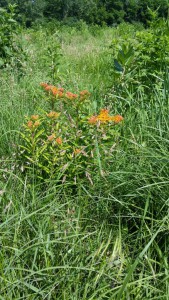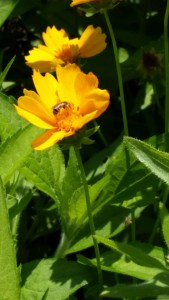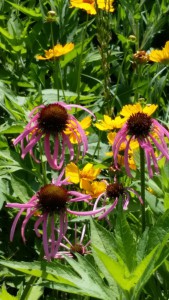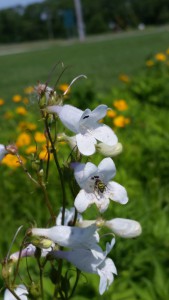If you walk around campus on your lunch or break, you may venture along one of our prairie areas. Take a moment and observe the native plants as you pass. You will notice that they are abuzz with activity. Bees, butterflies and other insects are constantly moving from plant to plant in search of nectar or pollen. Now take a look at the freshly mowed lawn. It appears neat and attractive but wait… something is missing. Why are the pollinators not buzzing about? Lawns are a monoculture of turf grasses that are treated to kill the dandelions, clover and any other “weed.” Therefore, it is important that we create a balance in our landscapes.
Native areas such as ours at LLCC are vital to the pollinators, and according to the USDA, “Three-fourths of the world’s flowering plants and about 35 percent of the world’s food crops depend on animal pollinators to reproduce. Some scientists estimate that one out of every three bites of food we eat exists because of animal pollinators like bees, butterflies and moths, birds and bats, and beetles and other insects.” Take a look at the pictures and descriptions of what is blooming in the prairie now and slow down on your next walk to observe nature in action here at LLCC.




